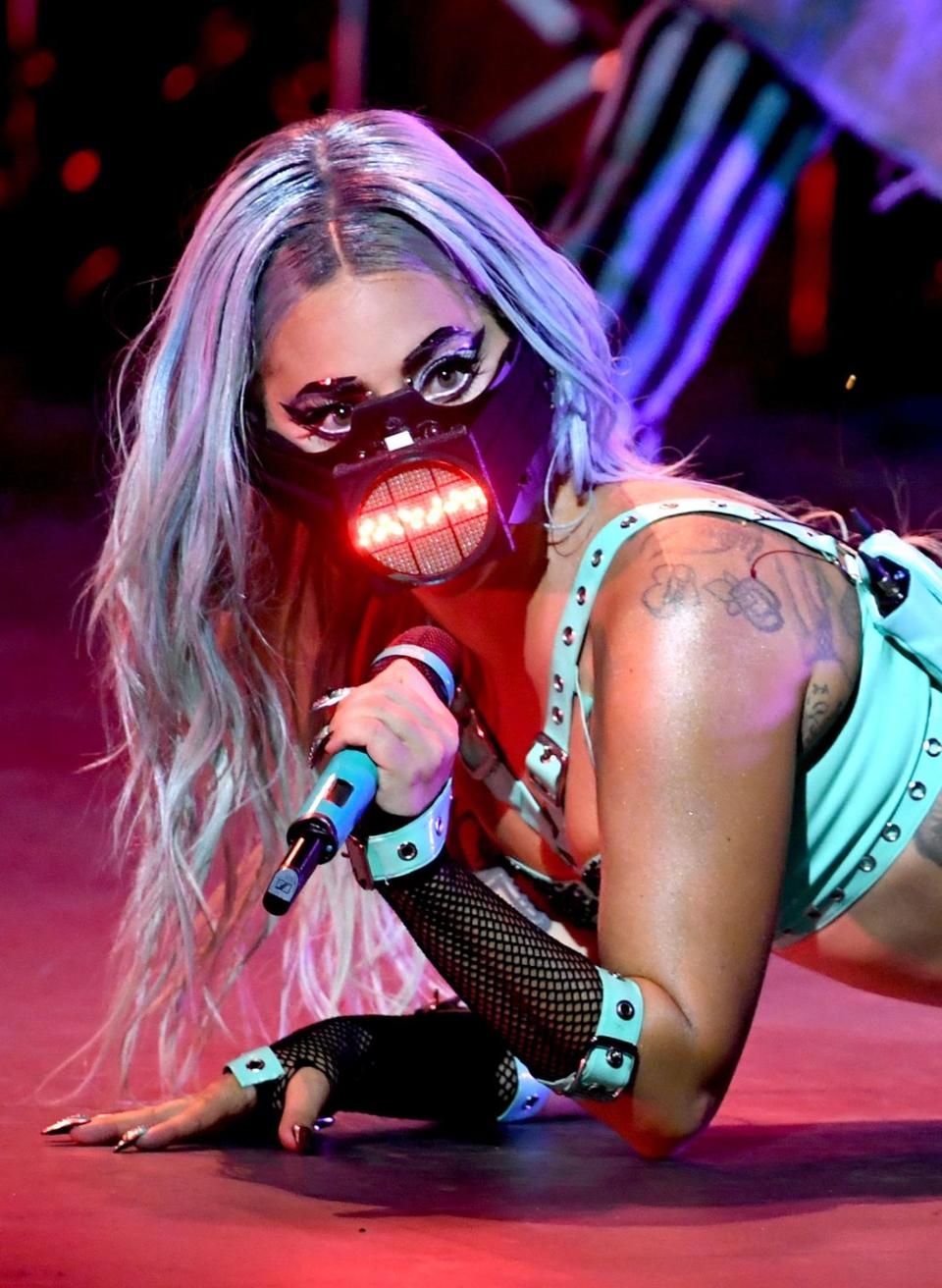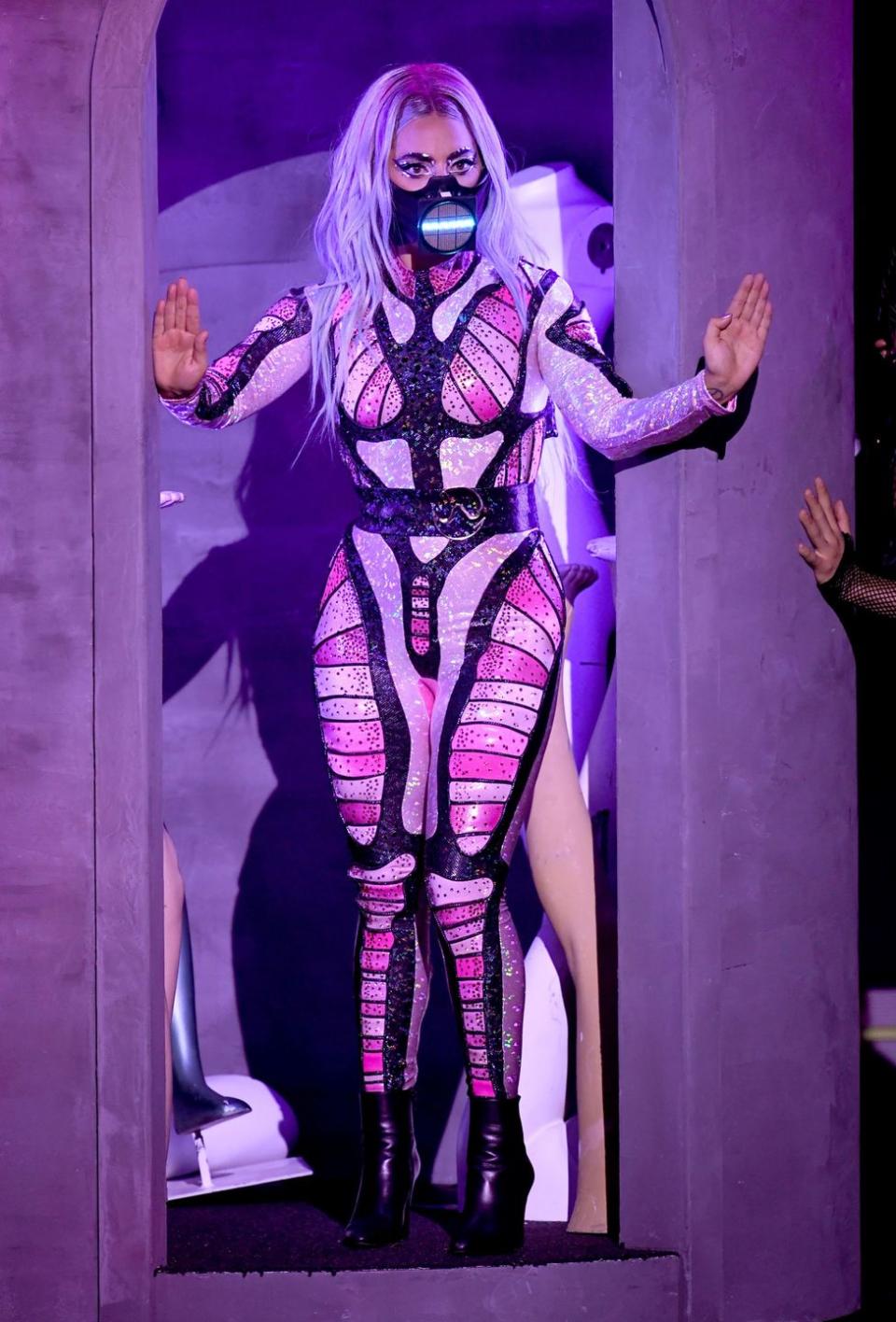How The Design Team Behind Lady Gaga’s Iconic VMAs Mask Put It Together "In One Week"

They first came together for Taylor Swift. Smooth Technology, a team of artist engineers in Brooklyn, New York, was born when the pop superstar had the crazy idea to feature wirelessly controlled LED costumes in her 1989 World Tour performances. James DeVito, Dylan Fashbaugh, and Dave Sheinkopf teamed up to light her stage, and within moments of working together, realized their synergy had to stick. They soon went full-time with their experiential design company, working with artists and musicians including Nicki Minaj, Katy Perry, Mariah Carey, and Billy Porter. (Remember the meme-worthy motorized crystal fringe on Porter’s 2020 Grammys outfit? Yep, that was Smooth Technology.)

So when Lady Gaga wore an LED face mask during her performance at the 2020 MTV Video Music Awards, it was easy to see Smooth Technology’s handiwork—if you knew who they were. But given that behind-the-scenes artists rarely get the credit they deserve, many (including myself) were left wondering if they could buy something similar on, I dunno, Etsy?
When Sheinkopf kindly emailed me to say he’d be happy to answer my (embarrassingly ignorant) questions about the impeccable mask, I had no idea it’d been one of their most challenging projects to date. Here’s how the mask to rule them all came together.
How did this happen? Did Lady Gaga call you and say she needed a face mask?
James DeVito: Martha Del Rio, her stylist, reached out to us. We had previously worked with her on [Gaga’s] Enigma shows out in Vegas. Lady Gaga wanted to be wearing a mask, but she also wanted to be performing live and singing live. And she wanted a way to show that she was doing that and really express herself while having this thing covering her face. So she and Martha came to us looking for a sound-reactive mask.
How do you create a sound-reactive mask?
Dylan Fashbaugh: [Laughs] Yeah, it's a ton of parts. One of the first things that has to be done is figuring out even remotely what we want it to look like. We started by looking at a bunch of different kinds of mask designs, and we worked with designer Diego Montoya. Once we figured out what the overall shape would look like, we looked into what kinds of LED panels and screens could actually fit into that shape. Then it becomes this big sourcing thing where you're trying to figure out, "What are these panels? How can we control them using all the electronics we've developed?" And of course, it's always some kind of crazy timeline.
DeVito: I think this was officially our shortest timeline yet. It was one week.
Dave Sheinkopf: We can develop so many things in-house because of the tools we use. We use 3D printers very heavily, so we're able to design and create custom plastic parts. We can design in CAD, which is computer-aided design. We can make our own circuit boards in-house. We can make our own software in-house. At this point, we’re probably in a small set of people who can make something like this in this amount of time we had, just because of our tool set.
DeVito: Yeah, the mask is actually remotely operated by the lighting desk to be able to control the color on it.
Sheinkopf: It can do so much more stuff. We just packed it with features because we didn't know what [Gaga] wanted exactly. We had a really short timeline to work with the lighting designer [and] stylists, so we figured, "Let's give them so much functionality on this thing." They could have scrolled text [on it].
She could always use that again, depending on how long this pandemic lasts, right?
DeVito: Yeah, [the show] was obviously unique in many ways because it was the first one where we weren't allowed during rehearsals or the recording because of COVID restrictions. We had to put it on a plane and send it off.
How do you design the look of a mask like this? Do you use moodboards?

DeVito: We were sent sketches from Diego that ended up looking pretty similar to the final product. A lot of it was fitting that Chromatica cyborg-esque look.
Sheinkopf: And balancing that with some really functional restrictions—because it was really important to [Gaga] to sing on the show. A lot of our design considerations were like, "What can you sing in? What is not going to make you sound like you're singing into a tin can?" There’s a lot of different types of masks that are really structurally sound, like dust masks for construction or working with chemicals, and those are things that are meant to be worn—you can whip your head around and they'll stay on your face. But none of those will actually let you sing or even open your mouth that much.
So we worked with the sound person on the show, talked with the producers, talked with the stylist, and it was a lot of considerations tied together to come up with something that was functional from both a stylistic standpoint and a performance standpoint. That's definitely a challenge to whip together in a couple of days.
What was your reaction to seeing the mask in action? And then witnessing the social media reaction afterward?
Sheinkopf: I think part of what was cool about this project was that it seems like the desire to build something like this came from Gaga [directly], A lot of the main VMAs performers were not wearing masks. They were under very strict safety rules, and everyone was quarantined for so long, the performers didn't have to wear masks but the dancers all did. When Gaga heard that, she was like, "That sends the wrong message, to say that if you're at a certain level of power or something, you don't have to wear a mask." I think it really meant a lot to her to wear a mask. Then obviously, if she's going to wear a mask, she's going to wear a crazy thing that changes fashion.
But for us, that was really an inspiring ask. We were like, "That's a really well thought-out concern coming from a person who does have a lot of influence, particularly on young people." It was really inspiring and that made us want to work on this even more.
You Might Also Like

